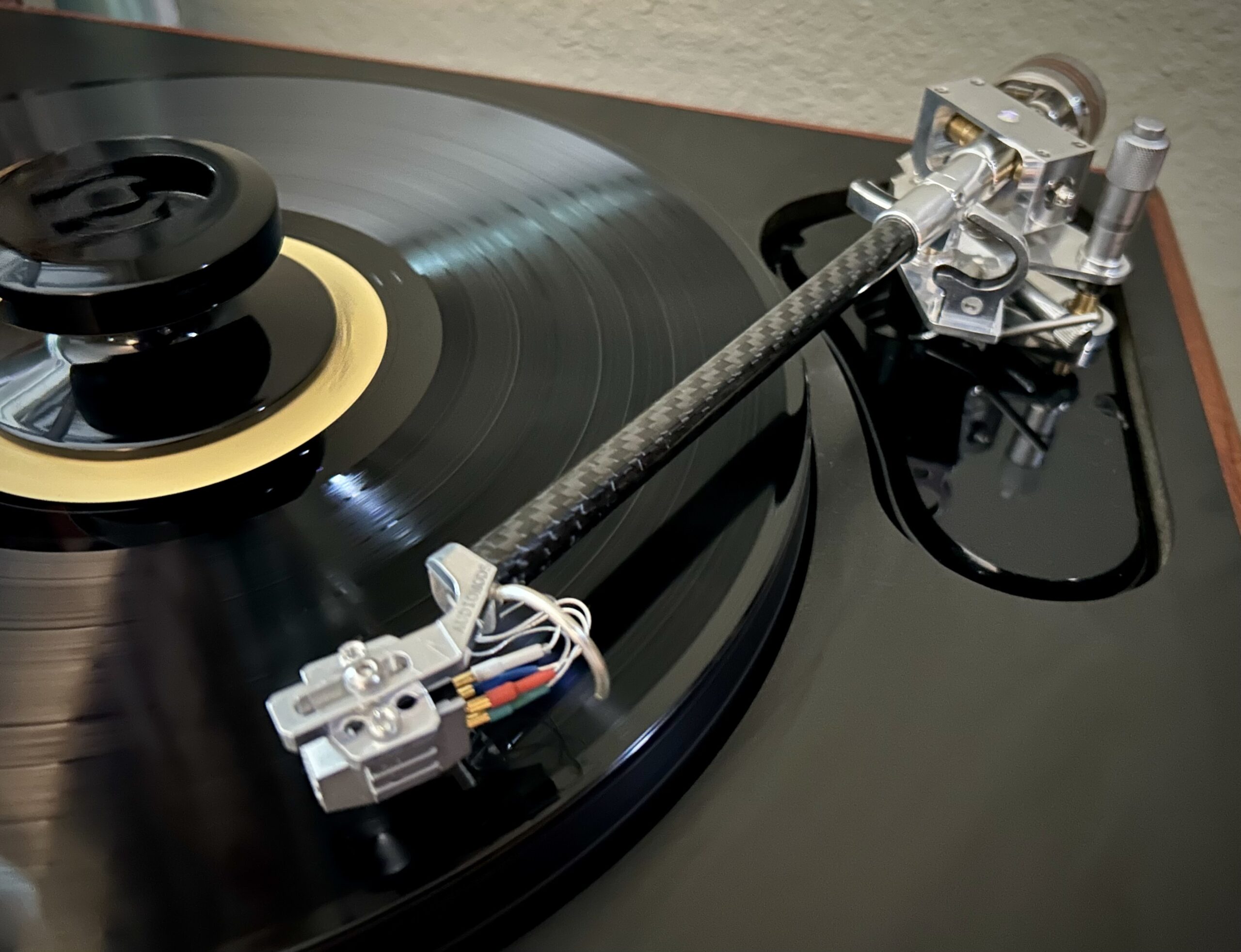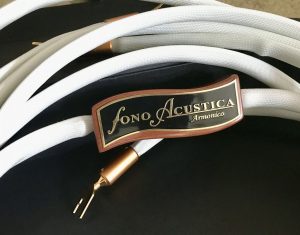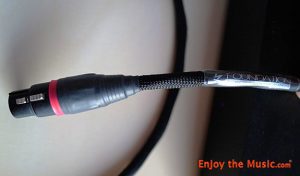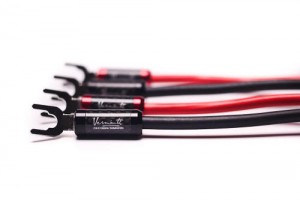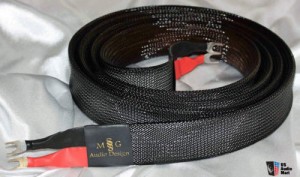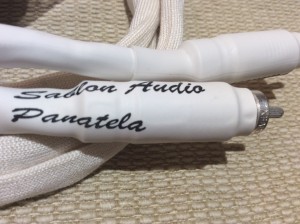The years 2015 and 2016 was a major transition for my family. A promotion for my wife resulted in the remodeling and eventual sale of our home on the East side of Washington state, which had been our home base for over 15 years. In my audio room, I had put together several excellent systems, and this was the genesis of where I began writing for Affordable Audio, and later transitioning over to Positive Feedback. The move to Western Washington meant a year long stint in an apartment, the dismantling of the stereo, and an eventual happy ending with a home purchase in the later part of the year. The new listening room is almost the same size as my previous one, although it is not as isolated from the rest of the home. With a clean slate beckoning, I decided to seize the opportunity to reconstruct a new reference system with an architecture that embraced simplicity, and lowered the count of components and associated doo dads in the rig. The foundational piece became a pair of JBL 4365 studio monitors, which are a reference quality pair of loudspeakers. The size of the JBLs required me to locate the equipment on a side wall in a beautiful credenza from Salamander Designs. Now the location of equipment and speakers created another issue, as I determined I would need a 24-foot run of speaker wire to get this system operational. In 2012, I had the good fortune to review the Wireworld Oasis speaker cables and interconnects (Issue 63), and the favorable impression I had of David Salz's products has always stuck with me. Since this was a season of rediscovery of audio, I decided to set out on an adventure and called Larry Smith at Wireworld to obtain a run of Eclipse 7 speaker wire with bi-wire terminations for this endeavor.

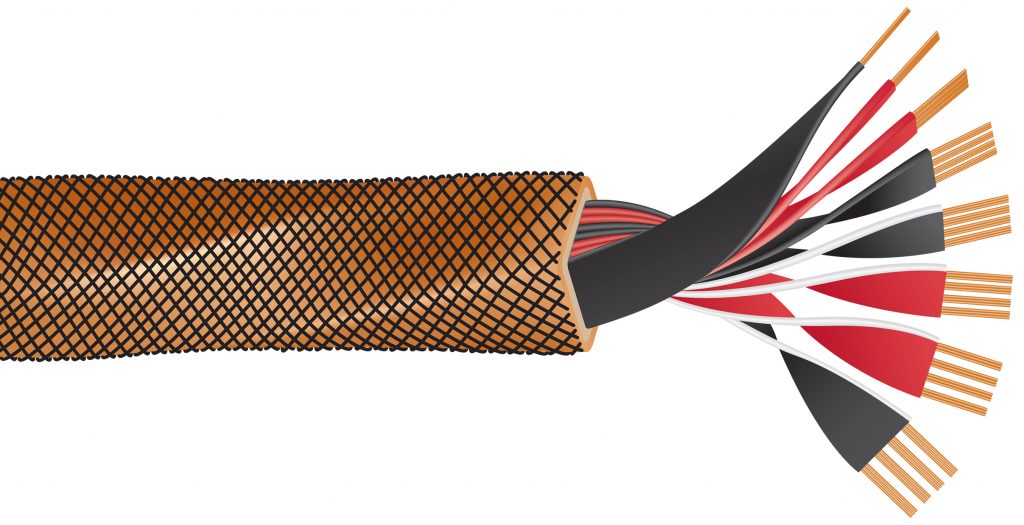
The Eclipse 7 speaker wire is a perennial favorite among audiophiles, as it represents a strong value within the reference segment of Wireworld's product line up. The Eclipse 7 cable is built with the David Salz most sophisticated architecture, which is referred to as Octo DNA Helix. In this design, multiple layers of flat conductors that are individually insulated make up the overall structure, and a great deal of attention is placed on the spacing between the individual strands of wire, with a parallel orientation to ensure a direct signal path with minimal phase shifts. The Eclipse 7 contains 96 strands of Ohno Continuous Cast Copper, for an aggregate 10 AWG speaker cable. This speaker cable uses Composilex 2 dielectric, which is the second generation formulation that David Salz has created for his cables. Composilex 2 is a proprietary formula that contains mixture of elements which outperforms previous dielectric configurations that relied primarily upon Teflon. Through the careful design of the dielectric material, David has been able to lower the noise floor of the Wireworld cables, which will result in a higher degree of resolution and focus to the music. I requested a bi-wire cable, which has the silver clad Uni-Term banana plugs. These are robust terminations that fit snugly in the speaker binding posts and are stout enough to support the weight of a chunky 10-gauge speaker wire. An eight-foot run of Eclipse 7 speaker wire sells for $1550 in a single wire termination. The extra terminations for the bi-wire configuration adds an additional $100 to the price.

During our phone conversations Larry managed to convince me to take a couple of pair of the matching Eclipse interconnects for this review. This way I would be able to experience a holistic presentation of David's design, and eliminate any variables based on interactions of a differing cable in the system. The Eclipse 7 interconnect uses the Quad Helix architecture, which consists of 48 strands of Ohno Continuous Cast Copper wire sheathed in the Composilex 2 dielectric. My equipment uses single ended inputs so I require RCA terminations. The patented Silver Tube Plug that Wireworld uses has silver clad contacts with Teflon insulators and a silicone tension band to ensure a firm grip by the connector. The Eclipse 7 interconnects sell for $450 for a meter pair.
As previously mentioned, this iteration of the system is anchored by a pair of JBL 4365 speakers. The JBLs are driven by a First Watt F7 amplifier and a First Watt B1 preamplifier. An Audio Magic Kukama DAC is fed by a Mac Mini music server, with enhancements being a PS Audio LANRover and a Singxer SU USB/SPDIF converter. Analog payback is accomplished by a Technics SP 10 MK II with a Pete Riggle String Theory arm and ZYX 4D cartridge. The phono stage is the superb Liberty Audio B2B-1. Power conditioning duties are taken care of by a PS Audio P10 AC regeneration unit. All of this is housed in a credenza from the Geneva series by Salamander Designs. The interconnects used for the first half of this review will be the VH Audio Spectrum CU and power cords are from the Mission series by ZU Audio.
In a perfect world, all our audio systems would be faithful to the music, acting as a transport for the artist to reach out to the listener in a way that is true to his or her creation. Unfortunately, that is not how our hobby works and components at every stopping point of our audio journey will be afflicted with limitations, personality, and character. Some pieces may be more outspoken than others, and other gear can be demure and laid back. So, whether our systems suffer from acts of commission or omission, it can be generalized that our gear has character. Now this makes the task of evaluating cabling quite difficult, since most owners who consider a purchase are going to evaluate the candidate in the context of their own system. Speaker cables and interconnects should be tonally balanced, able to express low level information, and present a benign load to audio components. During my time with the Wireworld Eclipse 7 speaker cable I have to conclude that the Eclipse 7 does indeed possess those attributes. "Apologise" [Self-Titled, Geffen GFSTD 55] by Elanor McEvoy is a song that showcases the abilities of this wire with unadorned vocals that are remarkably free of coloration and excellent low-level resolution with the leading edge of the briskly strummed acoustic guitar chords. Further into the song an electric guitar comes in on the very edge of the mix, and in lower resolution systems this can be presented as essentially a diffuse noise. With this speaker wire in the system there is an improved degree of resolution that allows me to hear the distinct line played by the guitar. Then the drum kit joins in with light strikes to the snare drum and the outer rim. All the subtle cues are clearly evident on these instruments and this cable does a fine job of letting the music flow through the system. The Eclipse 7 is an even keeled speaker wire and it strikes the appropriate balance between resolution of low level detail and an even natural tonal balance across a full range of music.
Not a lot of time had to pass to draw the conclusion that the Eclipse 7 speaker cable has a gift for dynamic expression. Now I am not just referring to large scale crescendos in the music, but rather the ability to express low level dynamic nuances that contributes to the natural texture of music. When an audio component gets the dynamic shadings of a recording right, the listener gets a holistic experience of the aural palette that the musicians are working with. On "One World" [Ghost in A Machine, A&M Records B000W297LE] by the Police, the abilities of the Eclipse 7 are unmistakable, and this speaker cable does a first-rate job of sorting out all the dynamic contrasts of a wide array of instruments used in this piece. The horn section is sharp and metallic with an excellent bite to the leading edge of notes. The bass guitar is fat and bouncy just like it should be for a song with heavy reggae influences. The snare drum notes explode across the back of the recording while the kick drum has a solid and sturdy presence that fills in the bottom registers. On a macro level the Police just ebb and flow through this song with a rhythmic power that the JBL, First Watt and Wireworld components work seamlessly in conjunction to make this happen. The Eclipse 7 is an important contributor in this event and it is easy enough to hear the positive effects of having it in my system.
Over the years there has been a long running discussion over how metallurgy contributes to the overall performance of speaker cables and interconnects. Hobbyists often look for sweeping statements to bring some sort of order to their understanding of how things play out in their systems. A popular one is that silver cables tend to be bright and copper has warmth. Now there may be instances where this plays out but it's not really an indelible fact. The Eclipse 7 speaker cable is not defined by its use of copper wire, but is rather a convergence of dielectric, geometry, terminations, and finally its gauge and type of wire. In short it is a sum of all its design parameters, and no single one attribute will be the defining characteristic that determines the cables ability. My experience is that the Wireworld cable does not overtly imprint its DNA onto the music, but is rather a conduit that allows the amplification and speaker system to express what they are without any overreaching interpretation or influence by the speaker wire. Recordings that have texture and big tone come across that way while other compositions that are bright also retain that characteristic. Music that is flat and compressed, well those pieces still sound quite poor. Perhaps the Eclipse 7 wire does have a slight predisposition to warmth with a full presentation. That is certainly possible. However, this leaning is very slight and I would consider the Eclipse 7 to be one of the most evenly balanced products I have encountered. When listening to "Don't Breathe" [Stories, Self Released B002RA7BZS] by Ellis Paul, I was struck by the natural tone and texture the vocalists have. The harmonies that the singers entered into blended so neatly and when one voice trailed off early the resolution is so realistic that the music felt completely natural and real. The acoustic guitar work is vibrant and has an organic character that beckons to the listener to pay close attention. The Eclipse 7 speaker wire is unadorned, unhurried, and unobtrusive in nature. Which is something I value in a component, and an audio system.
After a bit of time, my acquaintance with the Eclipse 7 speaker wire is firmly established, so I turned my attentions to its traveling companion. The Eclipse 7 interconnects were patiently waiting their turn and on a quiet Saturday afternoon I decided to work them into my system in place of the VH Audio Spectrum CU interconnects that have been reference cable for me for several years. I ran these wires for a full week in a secondary system for break in so the number of hours on them are in the 160 range. Even though both cables contain copper wire this is not a defining characteristic. The architecture, dielectric, and terminations are fundamentally different, and right out of the gate I noticed that each cable presented music with marked differences. In comparison I found the Eclipse 7 interconnects to be smooth, refined, rich, and unfatiguing in their presentation of music. The Spectrum CU are more immediate and engaging, which can be a blessing or a curse depending on the tonal shadings of the rest of the system. Now both sets of interconnects are excellent, but their presentation of music is undeniably different. On "One Trick Pony" [Romantically Helpless, Alert Music B008ARZ1TU] by Holy Cole, I find her voice to be slightly richer, darker, and dense with the Eclipse 7 interconnects. With the Spectrum CU cables in place, the guitar notes are a bit more incisive, the organ notes shimmer a bit more, and the presentation feels to be more up front in the venue. When switching these interconnects in and out, the differences are noticeable, yet both presentations get the expressive nature of the music right. One listener may prefer the final result of the system with one interconnect installed; this is going to come down to the personal preferences that we have as individuals. The end result of my listening sessions is that the Eclipse 7 is a first-rate interconnect that has a remarkably even tonal balance from top to bottom. The quality of sound with this cable sneaks up on you and makes a case for itself in the long run rather than dazzling you with its fancy footwork.
The Wireworld Eclipse 7 speaker wire is a wonderfully proportioned cable that maintains the proper balance between tonality, resolution, dynamic expression, and happens to be easy on the ears during those extended listening sessions. David Salz builds fantastic products and the Eclipse 7 is a testament to its heritage and the evolution of Wireworld products. Every aspect of this cable is top shelf; from the Ohno Continuous Cast Copper wire, to the Composilex 2 dielectric, Uni-Term banana plugs, and the Octo DNA Helix architecture. The Eclipse 7 presents music in an organic manner with realistic tone and texture and yet gets the complex dynamic structure of instrument groupings correct. There is nothing of substance to fault this wire aside from it being somewhat stiff. Yet given the nature of its individually insulated wires and an aggregate 10-gauge girth it is understandable that it cannot make a sharp bend like an overcooked spaghetti noodle. The Eclipse 7 interconnects are also extremely well-constructed drawing on high grade materials for this design. These interconnects have a dense and rich texture in terms of tonal presentation and have a refined character that is to be expected from an upper tier interconnect. It is not likely that either of these cables are going to wow you with bombastic sonic backflips, but rather reveal their charms over the long haul by making the emotional aspects of music accessible in a way that many other cables do not. As a reference level component, these are not inexpensive items to buy, and I certainly would not argue that. Yet when you are interested in owning a quality product that will be with you for the long haul you should consider the Wireworld Eclipse 7 products as they are both exquisite in sound and finely crafted cables.
Manufacturers Comment
The Eclipse 7 series of cables were developed with the singular goal of providing the listener with the experience of hearing and feeling their music without the losses and sound effects normally created by cables. To achieve that end, the cables were developed and refined through extensive comparisons to the only true reference standard for cable performance, a direct connection between components. In science, the elimination of the device under test is the primary type of test control. For cable design, this type of testing is essential to preserving musical timbre and details because it is the only way to fully hear tonal changes, and the details the cables are not letting through. We believe that Wireworld is the only cable brand that demonstrates this in public with the Cable Polygraph presentations. It may also be interesting to note that the cables that preserve the most music also tend to have the best measured waveform fidelity. David Salz
Eclipse 7 Loudspeaker Cable
Retail: $1550 in a single wire termination, 8ft.
Eclipse 7 Interconnect
Retail: $450 for a meter pair
Wireworld





